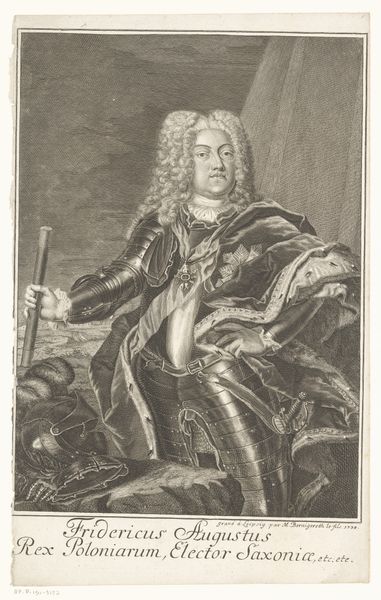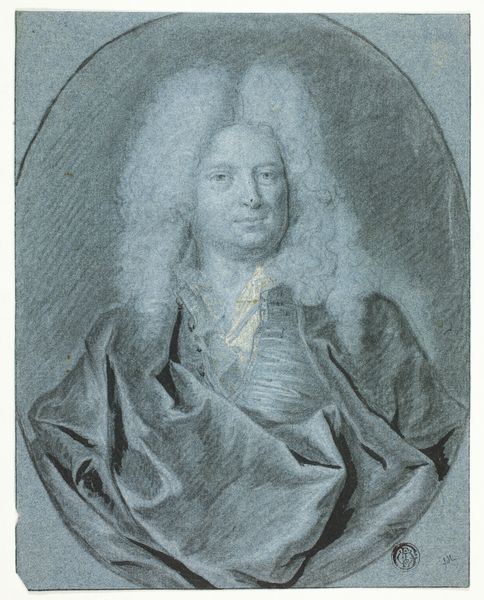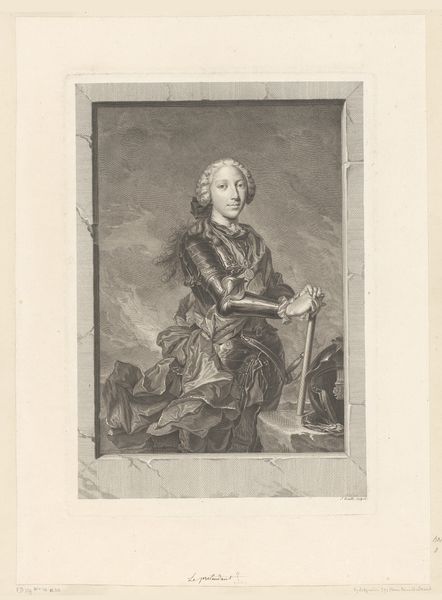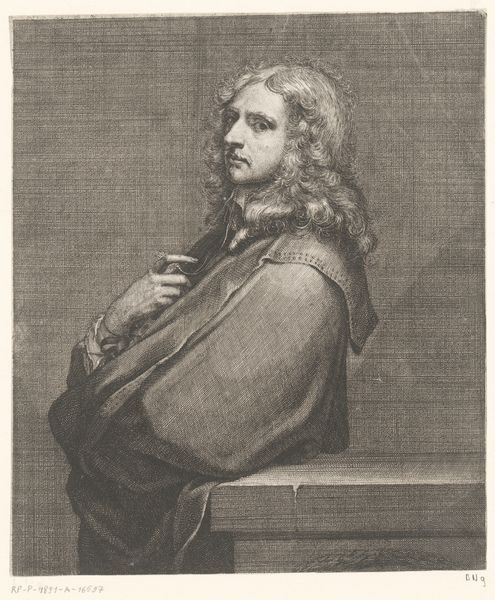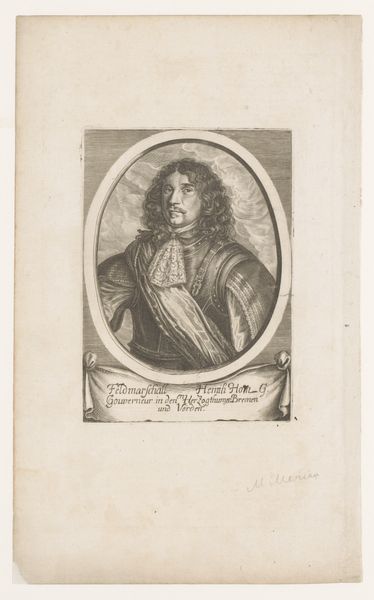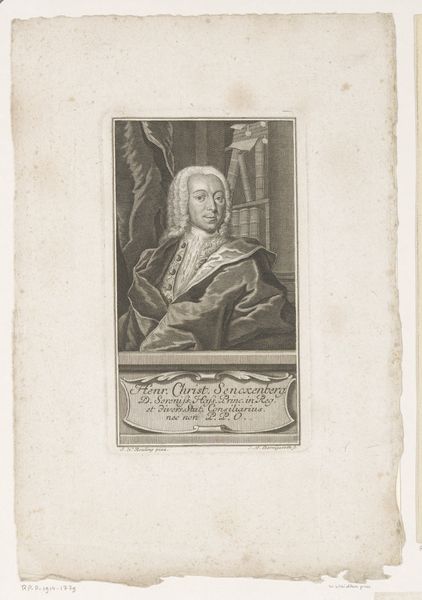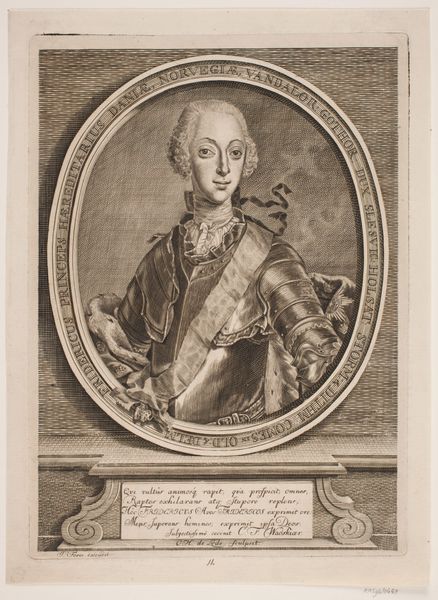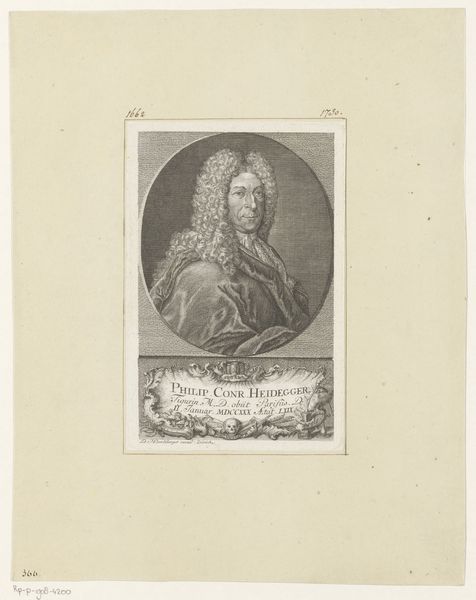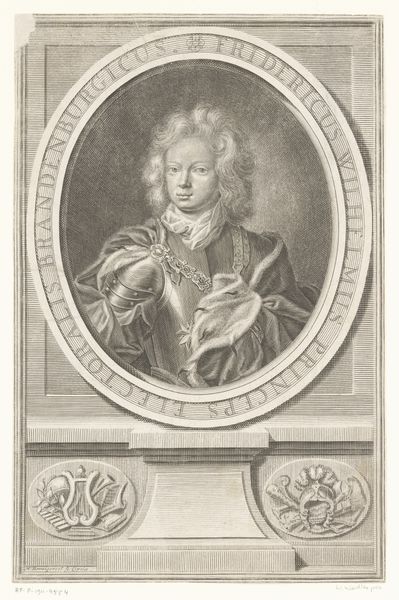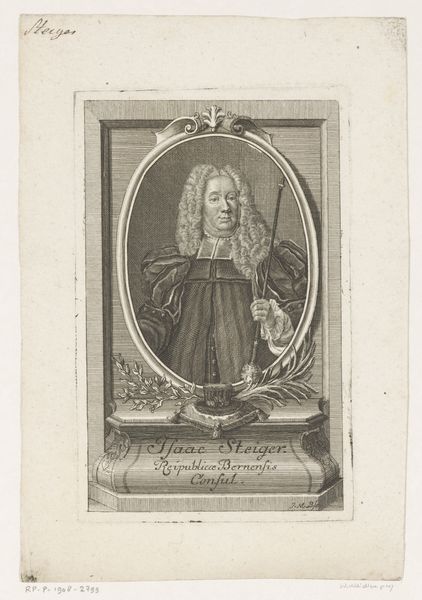
Studie til et portræt, formentlig af A. G. Moltke; til højre på bladet studie til Elefantridderordenens kæde 1752 - 1792
0:00
0:00
Dimensions: 398 mm (height) x 304 mm (width) (bladmaal)
Editor: This intriguing study, believed to be a portrait of A.G. Moltke by C.G. Pilo, dates sometime between 1752 and 1792. Executed with colored pencil, the sketch feels both regal and somewhat incomplete. What do you see in this piece, particularly regarding the symbols or suggestions of status? Curator: The immediate symbolism that jumps out at me is, indeed, the fragment of the Elephant Order chain, denoting high honor and access to power within the Danish court. But it’s the *way* Pilo represents this power, as fragmented, almost like a memory trace, that’s interesting. Don’t you find it curious that the portrait itself is a study, a preparatory work, and not a finished, assertive declaration of status? Editor: That is thought-provoking. It’s not a straightforward, idealized image, which one might expect for a portrait of nobility at the time. Curator: Exactly! It implies a psychological space. Look how the Elephant Order itself is almost floating, a separate study on the side. What emotional connection do you think Pilo tries to establish between the portrait and chain as signifier? Could it be to reinforce not just elevated position but its significance in relation to Moltke's presence and legacy? Editor: Perhaps it reveals something about the artist's or sitter's perception of power – less about unyielding authority and more about how such symbols function in memory and identity? Curator: Precisely! Pilo isn't just depicting Moltke; he's investigating the iconography *of* Moltke. What kind of person *becomes* signified by such ornamentation? And you see these cultural images aren't simply reflective; they are building blocks. The sitter in the sketch and his necklace come together in a memory piece that tells us about much more than this specific person at this specific point. Editor: I see it now, it isn't about documentation, but symbolic weight. It really reframes how I see portraiture of this era. Thanks! Curator: Indeed. Considering iconography as cultural memory really lets us expand our understanding of visual narratives.
Comments
No comments
Be the first to comment and join the conversation on the ultimate creative platform.


